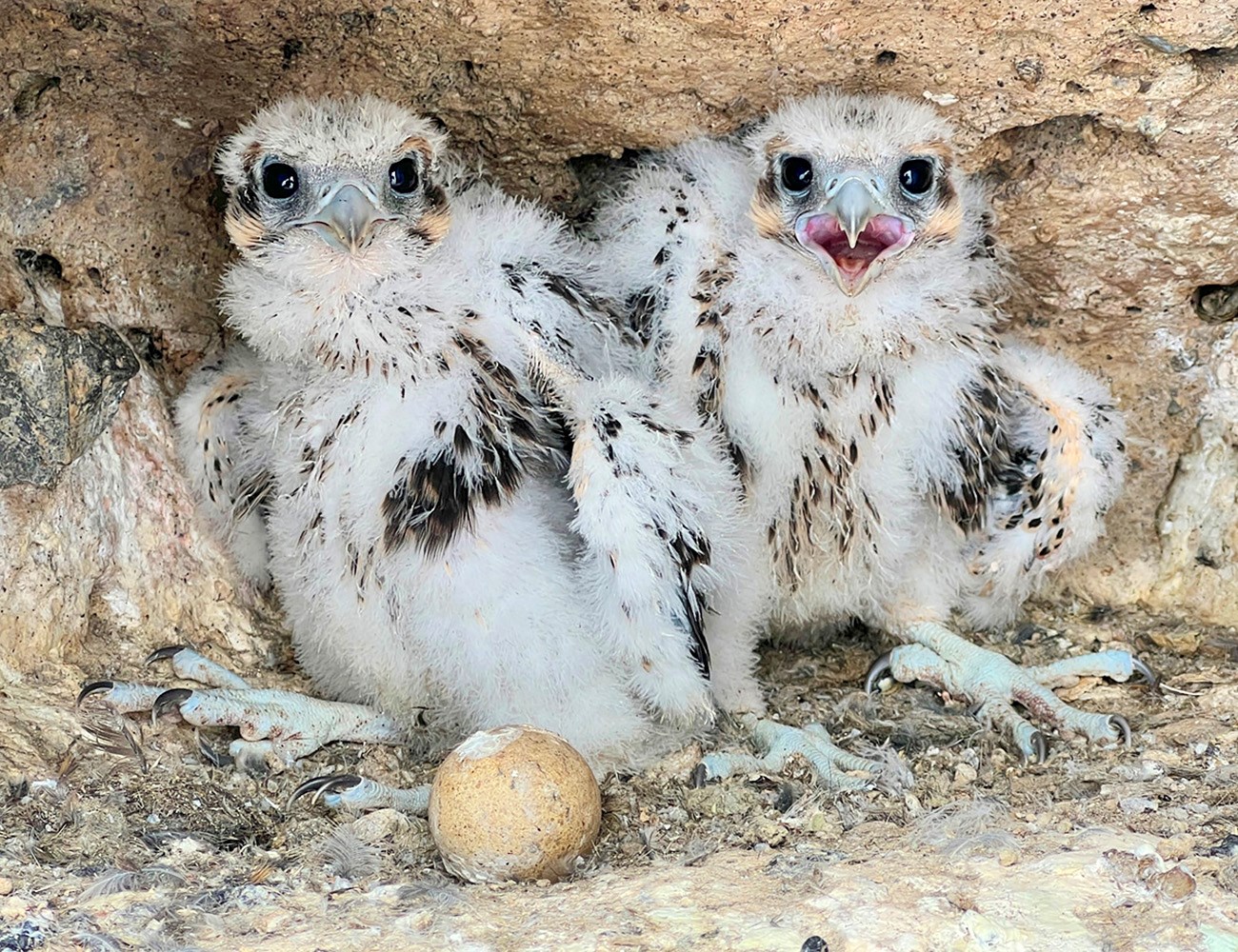Last updated: August 14, 2025
Article
Low Falcon Nest Success at Pinnacles in 2023: Could all that Winter Rain Play a Role?
By Science Communication Specialist Jessica Weinberg McClosky, San Francisco Bay Area Network

NPS / Gavin Emmons
July 2023 - Pinnacles National Park’s captivating, cliff-nesting prairie and peregrine falcons wrapped up their 2023 breeding season in late June. The park lifted raptor advisories accordingly, and re-opened those climbing areas that doubled as falcon nesting territories. A normal number of adults nested, and visitors did their part to comply with closures and shield the birds from disturbance. Still, nest success was low, especially compared to the high numbers of fledglings both species raised in 2021 and 2022.

NPS / Gavin Emmons
Like last year, the falcon monitoring team led by Wildlife Biologist Gavin Emmons recorded nine prairie falcon and four peregrine falcon territorial pairs. But while last year all 13 pairs nested and successfully raised a remarkable 46 fledglings, this year just six pairs succeeded at raising a total of 17 fledglings. The average number of falcon fledglings raised in the park from 1984-2022 is 28.
This year, among prairie falcons, one pair didn’t nest, five nests failed during the egg incubation and nestling-rearing periods, and three pairs raised 10 fledglings. Among peregrine falcons, one nest failed, and three pairs raised seven fledglings.
From monitoring falcons in Pinnacles since the 1980s, we know that variation in nest success from year to year is normal. But what causes it? Many factors are likely at play. Nest predators, prey abundance, temperatures, diseases, disturbances, environmental contaminants, etc., can all affect nestling survival in any number of combinations.
After witnessing the highs and lows of recent years, Emmons has an additional hypothesis—that heavy winter rains may contribute to lower nest success. He posits that even if lots of rain is a boost for falcon’s small-animal prey, it also results in a lot of vegetation growth on the ground. By the time falcon nesting season is in full swing, tall or dense vegetation may hide prey from falcons’ sharp eyes, limiting their ability to find enough food for their offspring.

NPS / Jessica Weinberg McClosky
Conversely, dry years with less vegetation cover may lead to easier hunting conditions and contribute to higher nest success (see graph above). Though Emmons has yet to evaluate the strength of the precipitation-nest success hypothesis at Pinnacles, other biologists have noted similar findings among prairie falcons in other places. Either way, having such a lengthy data set— and one that continues to grow every year— will be essential for exploring potential links such as this.
Besides falcons, the monitoring team confirmed that American kestrels, red-tailed and red-shouldered hawks, great horned owls, and Cooper's hawks also nested in Pinnacles this year.
For more information
- Pinnacles Raptor Advisories and Raptors webpages
- San Francisco Bay Area Network Falcon Monitoring webpage
- Pacific Coast Science & Learning Center Prairie & Peregrine Falcons webpage
- Contact Wildlife Biologist Gavin Emmons
See more from the Bay Area Nature & Science Blog
